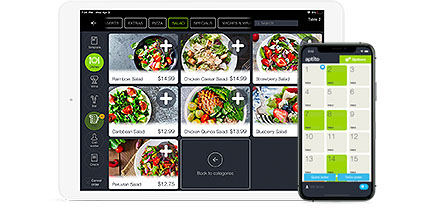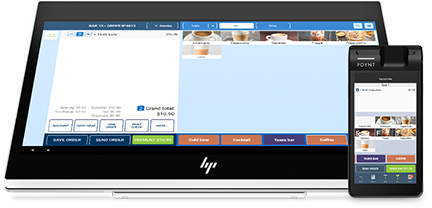
Social Media Marketing for Restaurants: Become an Instant Expert21 min read
We realize you’re a busy business owner. So let’s cut to the chase: social media marketing. You need it. It’s a relatively inexpensive marketing channel, and in an industry with thin margins, you need every edge you can get.
Social media marketing can help you in many ways, but the bottom line is that it can, well, add to your bottom line. But there are two essential components of social media marketing that most guides leave out, or get wrong.
Not here.
No, here, we’re going to divulge all.
While no single blog post can make you a social media marketing guru, we promise you this: once you finish this post, you’ll know how to get started, and you’ll be excited.
Very excited.
Let’s go.
What Is Social Media Marketing?

For the busy restaurant owner, social media marketing may seem a frivolous endeavor. After all, niche marketing methodologies demand valuable resources in the form of time or money. While the strategy does have a few potential downsides, such as a relatively slow ROI and a potential learning curve, it also offers real, concrete advantages.
The question remains, though, just what is social media marketing? And how does it make sense when there are more direct advertising avenues available?
Let’s start with a basic definition: social media marketing is a type of Internet marketing.
It involves creating, posting and promoting content on social media platforms. The goal is to:
- Drive engagement
- Build brand awareness
- Generate direct sales
In a broader sense, the purpose of social media marketing is to help you meet any branding or marketing goal you may have, at a low cost. You can think of it as a supplement to your regular advertising approach. But you can also make it a primary component of your overall marketing strategy.
In order to meet these goals, you’ll use a number of popular social media platforms to connect with your growing fan base and gain valuable brand ambassadors.
Did you know? Today’s most popular social media platforms are Pinterest, Instagram, Facebook, Twitter and Snapchat.
Social media marketing involves the creation and posting of:
- Text and image updates
- Videos & Photos
- GIFs
- Infographics
- Long form blog posts
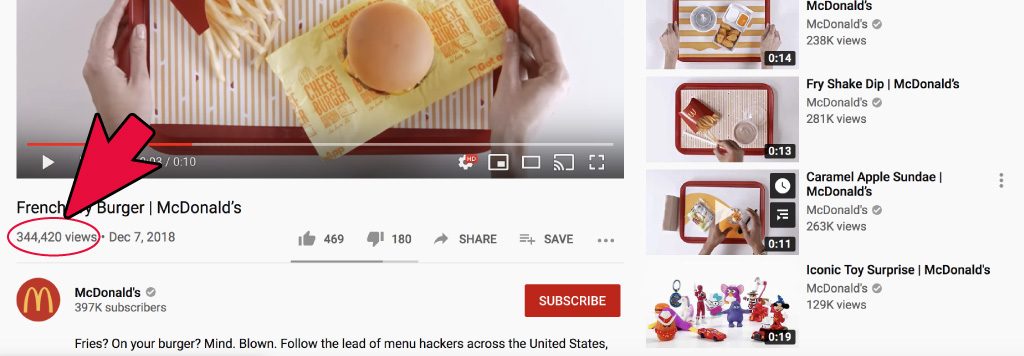
Tools
One of the main advantages of this type of marketing is that it’s relatively inexpensive. Even when you add in tools like Mention, Buffer and WishPond, the cost is still low compared to other methods of advertising.
Social media marketing tools allow you to:
- Schedule several updates at once—Buffer or Hootsuite
- Monitor your brand mentions online—Mention or Google Alerts

- Promptly respond to user reviewers or feedback—Buffer, Hootsuite or Mention
- Host contests—WishPond, Shortstack or Rafflecopter
Apart from Google Alerts, none of these tools are free. But for what they allow you to do, they’re a worthwhile investment.
Components

As a restauranpreneur—or aspiring restauranpreneur—you have an advantage as your industry lends itself well to visual media. More on this in a bit.
For now, let’s explore the components of a social media marketing plan. You have:
- Social media monitoring and engagement. This involves using a tool like Mention or Google Alerts to monitor the Internet for your brand name. You then respond to these mentions constructively in order to drive engagement. If you keep the PR speak to a minimum, this also serves to humanize your brand.
- Social media advertising. You can reach a large yet extremely specific audience with social media ads. But you can also advertise your content, contests and even your products for free via social media if you build a responsive following.
- Content production. This is where you’ll do much of the day to day work. Outside of your blog, ‘content’ doesn’t have to mean written blog posts, white papers or infographics. You’re a restaurant. Be visual. Overall, Pinterest and Instagram should be your go-tos, followed by Facebook, and then Twitter.
- Social media analytics. You can—and should—conduct an analysis of your reach, engagement, and sales on social media. This analysis is important when starting out, but it’s crucial for ongoing efforts as well.
As a whole, these activities are known as social media management.
Throughout this post, we’ll be linking to papers that you can refer to for extra information or background. Think of these as extra credit.
The first of these is Social Media Use in the Restaurant Industry: A Work in Progress
In this paper, the authors, Abigail Needles and Gary M. Thompson, Ph.D., review the results of a survey. This survey included over 150 restaurant owners who were dabbling in social media marketing. One of the main takeaways is that while many restaurant owners are experimenting with social media, most lack a well-defined strategy.
The implication is that if you can pull ahead of your competition in this regard, you may give yourself an incredible advantage over competitors who are slow to adapt. After all, social media isn’t going anywhere, and millennials are more likely to buy from businesses that have a social media presence.
How Social Media Marketing Can Lead to a Higher Table Turnover Rate

Let’s first explore the ways in which this type of marketing can help any business. In general, social media marketing can:
- Increase traffic to your website
- Expose customers to your brand and products
- Create a unique brand identity
- Improve communication with your audience
- Increase conversions
Now, let’s translate these into restaurant-specific benefits:
- Increase traffic to your website via inbound links from Instagram, Pinterest or Facebook. You embed those links into photographs and videos of your menu items. Potential customers see the mouth-watering items on offer, click them, and then find themselves viewing your website. With any luck, they’ll then check out your menu, location data, etc.
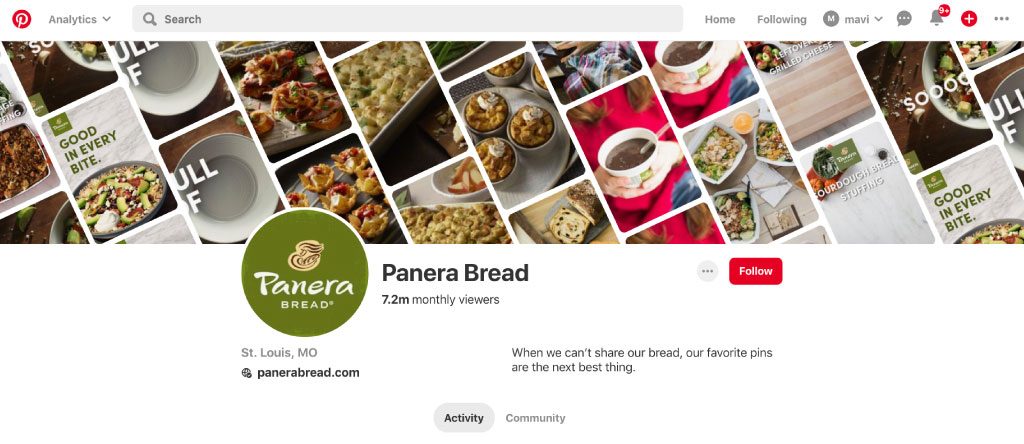
- Expose customers to your menu items and specialties. As potential customers follow you on social media, they’ll come to expect new ‘food porn’ photos on a regular basis. As they consume this content, they’ll become familiar with your brand. There’s an old adage in advertising that goes something like this: you must expose a potential customer to your offering seven times before they’ll convert. Well, you’re doing that here. For free.
- Stand out from your closest competitors. This one is easy if your competitors aren’t engaging in social media at all, but even if they are, you can still outdo them. It’s simply a question of who wants it more.
- Humanize your restaurant brand. Don’t just be a local eatery, have personality. Millennials prefer companies that aren’t afraid to show their humanity. This is yet another way you can stand out from your local competition, which can give you a leg up.
- Increase your average check size. Because you feature your delicious, unique entrees on social media through various channels, and because you engage with your audience on a regular basis, folks know where to go when they want good eats.
But Why Does It Work?
We’ve looked at how this form of marketing can benefit the restaurant owner. Now let’s take a look at how it works.
#1 Your Customers Use Social Media
The most effective marketing engages customers in such a way that they don’t feel like they’re being marketed to. That’s what social media marketing gives you the power to do. What’s more, social media posts can go viral, which gives them social proof.
#2 Customers Are More Receptive
Which do you think is more effective at engaging a potential customer, a radio ad or a piece of content the person wants to read? What about a TV commercial vs an image they want to view? The answer should be obvious. More expensive marketing techniques, such as TV and radio spots, are effective because they’re a shotgun approach.
With traditional advertising, you’re blasting your marketing out to so many people that some of them are bound to respond. But not only is this expensive, it can be flat out ineffective.
Social media marketing, by contrast, is more of a precision technique. You may still create a lot of content, but you’re creating—or curating—that content for a niche audience. Moreover, because you’re not serving these people advertisements, they’re more likely to remain receptive.
Did you know? Millennials, in particular, are advertisement-adverse. Many of them are even blind and deaf to ads in a very real sense.
#3 Social Media Marketing Improves Brand Recognition
While traditional advertising can generate immediate, short term results, social media marketing yields long-term results. This may seem like a shortcoming at first glance—until you consider the power of brand. If you post wisely over a long period of time, you can become well known in your space. Just consider these social media marketing success stories:
- Modern Market. Their Instagram Stories have helped them launch new locations. They did this by tying their Instagram Stories into their various contests.
- Kane’s Donuts. This Boston-based donut shop is a great example of how to leverage cultural events. They posted pictures of Patriot-themed donuts for the Super Bowl, which went viral and led to increased sales.
- Yeastie Boys Bagels. Food porn. Create it. Check out their profile to see how it’s done.
Did you know? An Instagram story is a short video that lasts only 24 hours on the platform. View it while you can!
#4 This Type of Marketing Increases Inbound Traffic
A robust social media following can result in steady website traffic. Your social media profiles give potential customers a way to find you, and your posts to sites like Pinterest and Instagram can drive massive traffic if they go viral.
#5 You Can Use Multiple Channels
All social media channels can lead to success, but your industry will play a large role in which channels you use. For instance, as a restaurant owner, you probably won’t get much traction from posting about your menu items on LinkedIn. Nor are you likely to find a lot of success posting to SlideShare, Quora or Tumblr.
But, as mentioned, you could do gangbusters on Instagram, Pinterest, and Facebook.
You might also consider using YouTube as a social media platform. YouTube is the second-largest search engine in the world. There are many ways you can use YouTube to build brand awareness. Here are but a few ideas:
- Host a cooking show or create cooking tutorials
- Publish webisodes that show your chef and kitchen crew at work
- Feature travel content that showcases areas from which you drew inspiration for your menu items
The possibilities are endless.
Utilizing multiple channels increases the odds that you’ll hit it big with one of them, building a loyal fan base.
#6 It’s relatively inexpensive
Even if you spend money advertising on YouTube, Facebook or Twitter, you’ll probably be shelling out much less than you would for TV or radio spots. What’s more, you can funnel potential customers back to your website, where they can opt-in to additional messages from you. This last point underscores the importance of publishing only quality content.
Facebook, in particular, allows you to advertise to people who are likely to be interested in your product, but Pinterest Business is another stellar option for the restaurant owner.
However, costs can begin to creep up if you pay professional writers to create blog posts or hire expert photographers to snap photos of your menu items. Fortunately, there’s no need to do this when you’re starting out.
That said, a simple proofread goes a long way. Don’t publish content that’s full of typos or grammatical errors.
Did you know? People naturally create subconscious associations between your content quality and your product quality. Don’t publish low-quality content.
#7 It Allows You to Gain Valuable Insights
By analyzing your social media engagement, you can glean valuable insights into what makes your audience—and your customers—tick. For instance, as you interact with customers online, you’ll find out where these customers are coming from, and some of these places may surprise you. Monitoring your social media activity can help you discover reviews, blog posts or other media that feature your restaurant.
Once discovered, you can feature this content in your own social media channels.
Your Competitors Are Already on Social Media…Probably
If your competitors are on social media, they could be enjoying the above benefits right now. With margins ranging from 3 to 5 percent, restaurant owners can’t afford to leave any potential advantage on the table.
That bears repeating.
You cannot afford to leave any potential advantage on the table.
Take a look around. If your local competitors have social media profiles, contests, or are exhibiting any other indicators of social media marketing activity, then get a move on.
All things being equal, when driving, walking or biking around town, patrons will stop at the eatery they feel the strongest connection to. Social media creates a feeling of connection, even if that connection is actually superficial. At the end of the day, all that matters is the psychological impact that this connection has.
Here’s your second extra credit assignment:
Marketing Strategies: How Small Restaurant Businesses use Social Media
This great paper underscores why social media marketing is so powerful, touching on the decline of traditional marketing methods and the rise of the millennial shopper. Millennials, more than any other generation that has come before, are turned off by traditional advertising and corporate speak.
The paper examines the marketing strategies employed by five different restaurants.
Get Started Today
If you’re eager to get started, there are a few things you can do right now. Let’s take a look. A deep dive into each of these resources is a bit outside the scope of this post, but we can touch on them.
#1 Create a Facebook Fan Page
A Facebook fan page is a stellar place to start. With a fan page, you give your fans a place to gather and support you. You can—and should—post images of your menu items here. You can also post fun pictures of your staff at work and play. Consumers love to see the inner workings of a business.
Facebook remains the most popular social media platform. Remember, one of the biggest advantages of social media marketing for restaurant owners is that it allows you to interact with consumers where they are.
#2 Create a Twitter Account
While Twitter doesn’t lend itself particularly well to the visual, it is one of the best tools available for staying in touch with your fans. Once you build a healthy Twitter following, you’ll find the platform to be a wonderful way to let fans know about new menu items.
You can also use Twitter to broadcast:
- Last minute menu changes
- Daily deals and specials
- Fun facts about your restaurant
Remember to include links to your menu items in your tweets.
Did you know? When using Twitter, it’s important to post about other things, too. In fact, only around one in four tweets should be self-promotional. Any more than that, and you might lose followers.
#3 Get Check-Ins with Foursquare
Foursquare is an application that lets users ‘check in’ when they visit brick and mortar locations. You can claim your business listing within Foursquare to track your check ins. More check ins equals more engagement. Plus, you can use Foursquare to create a loyalty program of sorts by rewarding people who check in frequently.
#4 Do That Dreaded Yelp Thing
You may have heard horror stories about Yelp from other business owners. But at a minimum, you should claim your Yelp listing and ensure that all of the listed information is correct.
If you decide to respond to reviews, do not:
- Wait more than 24 hours to respond. If you delay your response, you slash the odds that the reviewer will change their score in your favor.
- Lose your cool. Reviews aren’t always fair. Customers don’t understand the pressures of a busy kitchen or the frustrations of buggy POS systems. Still, you can’t fly off the handle when responding to reviews. You just can’t. Take the high road.
More tips from Yelp are here.
#5 Start a YouTube Channel
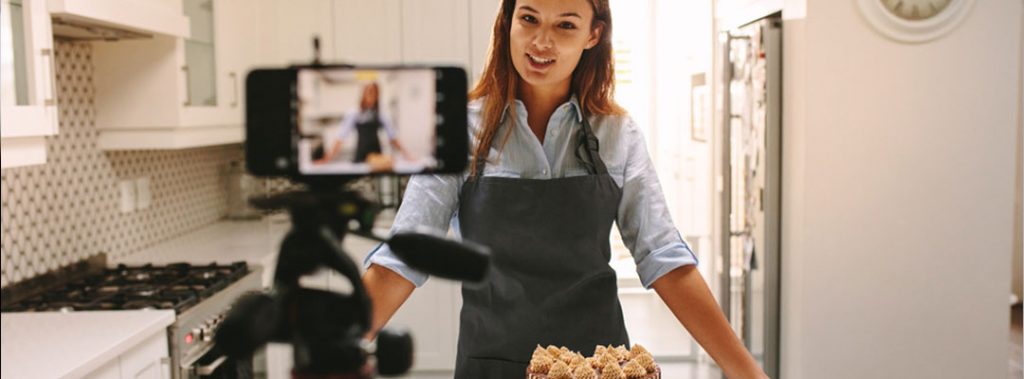
As mentioned, YouTube is one of the biggest search engines. In addition to the ideas we listed above, you could also:
- Show how classic recipes are made
- Interview guests
- Feature your chef
Make sure to link to your website in the description of every video. Also, ask users to subscribe, but don’t be annoying about it. Silent crawlers that appear on screen are effective for this. You can add these in post-production.
A call-to-action like this works well: “Enjoying this content? Leave a like and subscribe!”
One reward of building a YouTube channel is you can become known as an authority figure in the cooking/food space. This reputation will rub off on your brand.
#6 Blossom on Instagram & Pinterest
Instagram and Pinterest are both perfect places to share your menu items. But don’t fall into the trap of only snapping photos of dishes that you set up beforehand. Throw in some candid pics. Customers love to see the kitchen and staff, so post pictures of meal prep, too.
As a restaurant owner, you have an opportunity to take your fans on a journey from ingredients to plate, so don’t miss out.
What’s more, customers can post their own photos of your food and tag your restaurant. On Pinterest, customers can create their own boards and add your dish to them. Other users can then re-post the image to their own boards. With any luck, those pins will contain links to your website, which will drive traffic.
Did you know? Instagram, like Twitter, allows hashtags. You should always use them.
Think broad here. If you have a dish that relies heavily on chocolate, for instance, post about it on National Chocolate Day, and then use the hashtag #chocolateday.
#7 Create a Blog
Your blog should be the cornerstone of your social media marketing efforts. A blog gives you content that you can post about on your other social media channels. After all, if all you post is images of your food, people will tune out. Variety is the name of the game.
Even better, once you get the hang of creating quality blog posts, you can apply to guest post for popular food blogs. Being featured in any of the following blogs could substantially raise your profile:
- Food52
- Kitchn
- Serious Eats
- Budget Bytes
- Pinch of Yum
- Smitten Kitchen
For our third extra credit assignment, check out the paper, Small Business use of Facebook for Marketing: The Case of a Family-Owned Mediterranean Restaurant.
This case study demonstrates how Facebook can be a true powerhouse for your social media marketing endeavors.
Two Crucial Core Concepts
Excited to get started? Well, slow down. Just a tad. You see, there’s two core concepts that you need to understand before we let you go. In fact, if you absorbed everything else in this guide, but missed these concepts, you probably wouldn’t get very far.
These concepts are crucial.
They are:
- Buzz
- FOMO

Buzz
Buzz is an ephemeral concept related to virality. It’s hard to define, but we all know it when we see it. It’s something that gets people talking. It makes people sit up and take notice.
It’s hard to create intentionally.
Nevertheless, the more consistently you can generate buzz, the more successful your social media marketing campaigns will be.
Want to know the secret?
Be topical.
If you’re topical, you’re relevant.
Remember Kane’s Donuts? Their donut photos went viral because they were topical. The company leveraged the Super Bowl to get some attention for their own brand. Smart. Savvy. Sophisticated.

Not sure what’s going on out there in the wider world? Use Google Trends .
Did you know? Unless it relates to your brand story or identity, you should avoid politics or other potentially divisive issues.
For your final extra credit reading assignment, check out how Always created quite a bit of buzz for themselves with their #LikeAGirl campaign. Here’s the paper: Always #LikeAGirl: Turning an Insult into a Confidence Movement.
Here are a few more ways you can generate buzz consistently:
- Do your research. Who are your customers? What is their age range, generally? Where else do they hang out in their spare time? Build customer profiles, or personas, so you can better guess what they’re interested in. Try to come up with at least four ‘types’ of customers who frequent your restaurant. What are their interests? Look for areas of intersection between your restaurant and other things they’re interested in. Create content that caters to that overlap.
- Use teasers. Have you come up with a new menu item? Don’t reveal it in a single post. Tease it over several. A teaser campaign helps you build anticipation. Create your own hashtag for your product releases, too. Use it consistently.
- Use hashtags in other ways, too. Creating your own unique hashtag for your overall business will help you stand out from your competition. Keep it as short as possible, but make sure it’s unique. Again, use it consistently.
- Add value to the conversation. Each post should have value. Don’t post just to post, and don’t send non-stop promotional messages. If you want people to share your posts, be worth sharing.
- Foster relationships with brand ambassadors. Your biggest fans can also be your biggest promoters. A brand ambassador is a fan who loves to sing your praises. Think you don’t have any brand ambassadors? Use a tool like BuzzSumo or Mention to find out who is saying nice things about you on Twitter. You might be surprised. Reach out and invite them to enjoy a free meal.
FOMO
FOMO, or fear of missing out, strikes us all. Poor or rich, healthy or sick, we all suffer from FOMO from time to time. Just about every update you create for your social media marketing campaign should invoke FOMO in some way.
If you aren’t creating FOMO, your campaigns will fail. People simply won’t care.
A Deep-Rooted Fear
Consider Ug and Mug. Ug and Mug are cavemen. They hunt. They gather. They bathe…sometimes.
Ug and Mug eat berries and wild vegetables when they have to, but what they want is a big, fat, woolly mammoth.
But even when Ug and Mug—and a bunch of their friends, presumably—bring down a woolly mammoth, they worry that there might have been a bigger mammoth out there that they could have gotten instead.
Their bellies are full. Their children are fed. Yet they still worry that they might have missed out on a bigger score.
That’s FOMO.
Use FOMO in Your Campaigns
FOMO is tied to the concept of opportunity cost. For instance, to overcome a millennial’s choosiness, you must squash that gnawing suspicion that there’s a better option out there. They don’t just want a good dining experience, they want the best possible dining experience.
But they also want to save some money.
So let’s use FOMO to get them to spend money at your restaurant.
- Use time-based specials. Create time-based specials and post about them on social media. Happy hour, discount breakfast, etc.
- Provide social proof. Show lots of photos of people stuffing their faces with your food and having the time of their lives. This sparks a feeling of Gosh, gee, that looks fun. Why am I not there enjoying that food?
- Turn low stock into a selling point. Have you run out of stock because of demand? Update your online menu to reflect this. Sorry, this dish is sold out. Check back soon! This generates FOMO by subtly suggesting the idea that all of your dishes could sell out. Just keep it honest, and remember to update your site afterwards.
- Run contests on social media. People hate the idea of missing out, but they also hate the idea of other people winning something instead of them. This is one of the main reasons you should hold contests on social media. This method generates FOMO indirectly, but it’s still very powerful.
- Use time-based content. This is an advanced strategy. But when you have a substantial following, you can create posts that you will, at some point in the future, intentionally delete. As mentioned, Instagram Stories are great for this. What to put in these posts? What else? Coupon codes. Over time, this single strategy can be your main FOMO generator.
- Create a loyalty program. You’ve probably already thought of this, and good on you. But yes, you can create FOMO with a loyalty program, and you should.
- When designing images, consider the context. This is one of the reasons you shouldn’t fill your social media channels with glossy photos of your menu items. A few of those are great, to be sure, but what you really want is lots of photos that feature your food being enjoyed by actual human beings. Check out Coca-Cola’s marketing to see how this is done.
We hope this introductory post on social media marketing has you excited about the prospect of creating campaigns of your own. Stay tuned to this blog for more in depth restaurant optimization content.

